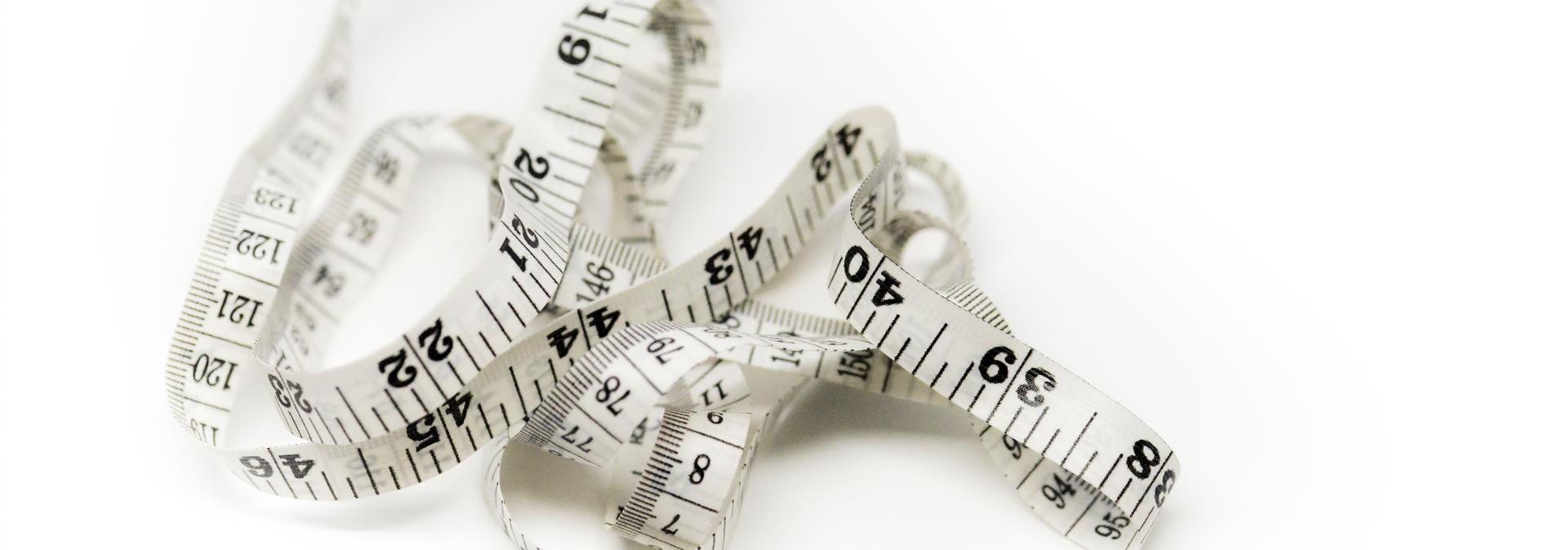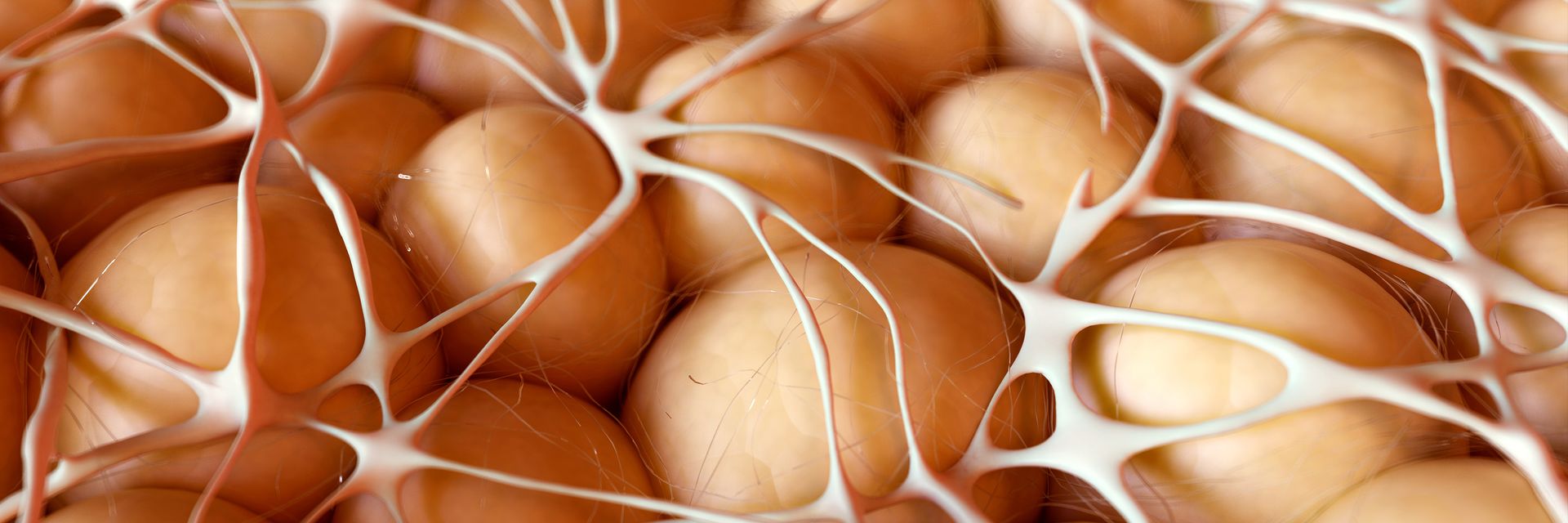[Editor's Note: This article was originally published in September 2018.]
Body fat is often scrutinized when evaluating health and diet, but what exactly is it? Fat cells provide nutrients, and regulate temperatures and hormonal changes in the body. In this article, we’ll explore the different types of fat tissue our bodies contain, and the variety of purposes they serve.
◊
Fat. Everyone’s got it, and nobody wants it. But maybe we’ve got the wrong idea. Fat isn’t just something that raises a scale’s number when you step on it. And body fat is not tracked on a nutrition label. But it’s very important and useful for our bodies. There are multiple types of fat, with many different uses. Keeping track might get confusing, so let’s start with the basics.
Trimming The Mystery Off Fat
The clinical name for fat tissue is adipose tissue. Adipose is the anatomical term for loose connective tissue composed of adipocytes (also known as lipocytes or fat cells). Adipose tissue is primarily located beneath the skin, in the subcutaneous layer, and provides insulation from heat and cold. It can also be found around internal organs as protective padding.
There are two main types of this tissue – white adipose tissue (WAT) and brown adipose tissue (BAT). White and brown fats serve specific purposes and appear at different stages in life. WAT plays a key role in energy metabolism, heat insulation, and mechanical cushioning. It also helps regulate blood sugar, and it is the source of a variety of hormones needed for our metabolisms and endocrine functions. WAT is what we typically think of as body fat, but too much of it can be a problem.
Measuring body fat has been a problem since the beginning of time. No perfect solution has been found, so find out 7 ways BMI is useless, 6 better alternatives, and 5 reasons to stick with BMI anyway.
BAT, on the other hand, is found mostly in newborn babies, and adults have much lower levels of this type of fat. BAT is made up of heat-producing cells, and is metabolically active. It is important for the development of newborns, as it protects the body and generates heat to keep small bodies at safe temperatures. Unlike WAT, BAT is efficient when it comes to releasing the stored energy in fat cells and is generally considered healthier.
Recent research shows a third type of fat in the body. In 2012, scientists discovered beige fat cells – a combination of white and brown. This merging of cell types has been found to occur in response to certain physiological triggers, like extreme cold.
Fat Cells: What Are They?
Put simply, fat cells are potential energy. The human body processes fat as fuel. When we consume more fuel than needed (more calories than our bodies are prepared to use), our bodies store the excess for later.
Think of fat cells as your body’s personal safe. It doesn’t take much to open the safe door and store your potential energy, or fat, inside, but it’ll take a little effort to get that door back open. When your fat is stored, and the safe is closed and locked, you can’t simply open the door again whenever you’re a little low on energy. Once stored, fat undergoes a chemical conversion – making energy storable, but hard to access. You’ll need the correct code or password in the form of another chemical conversion to make the stored energy usable again.
The Hormonal Truth About Fat
Fat concentration varies by gender, and males and females have different distributions of it. In adult males, body fat is typically located in the chest, abdomen, and buttocks. In adult females, it’s typically located in the breasts, hips, waist, and buttocks. This variation can be traced back to hormones, which determine the generation of fat. After puberty, fat cells are usually not produced. This means that, with few exceptions (such as significant weight gain or liposuction), our fat cell counts remain constant.
If fat cell counts stay the same, how come our body fat appears to constantly vary? While the number of fat cells remain constant, they actually change in size. (Shove enough things into your safe, and you will eventually need to upgrade to a vault!) We already know that if your calorie intake surpasses the amount of energy expended, you store the excess away into your safe, or your fat cells. But if you’re storing too much, you’ll need a bigger space to hold everything. Your fat cells grow larger to accommodate more potential energy being stored.
Larger amounts of stored energy may sound like a great thing. You might even think it means we don’t have to spend as much money on those afternoon pick-me-up cappuccinos, right? But the growing size of fat cells is what accounts for the changes in our health and weight. Think back to the safe. It’s easy to put that energy in, but not so easy to get it back out.
Fat Ch-Ch-Changes
Let’s say we’ve gotten into the safe. We’ve cracked the code and accessed our stored fat. Now what? Can we use it for energy? Well, not quite. Another process must happen first. Once the stored fat is accessed, it undergoes a chemical change to break it down into multiple new forms.

Magicians may be great at making things vanish, but even they can’t help with fat cells. (Image credit: Public Domain, via PH Free Images)
As the Principle of Mass Conservation makes clear, matter cannot appear or disappear. Instead, it changes states through a series of chemical processes. Following this same rule, your body’s stored fat cannot simply disappear once it’s accessed – it merely changes. Stored fat is converted into four different things: heat, carbon dioxide, water, and adenosine triphosphate (ATP).
We’ve mentioned heat before (remember how BAT is used to regulate temperatures in newborns?), so it shouldn’t be surprising that there is a large amount of heat energy stored in fat. When our bodies are cold, we access our stored energy and heat is produced. That’s why cold temperatures keep us burning more calories – we need the calories to stay warm and toasty!
Let’s turn up the heat on BAT! Brown fat is thought to limit weight gain, and has been found to activate not only during cold temperatures but also in cases of overeating, as observed in rodents.
Carbon dioxide (CO2) is a byproduct of burning things. It is also a byproduct of “burning” – or accessing – stored fat. When we use our fat, carbon dioxide is released, travels up the bloodstream, and enters our lungs. We then expel it from our bodies by exhaling.
Fat also contains water, as does almost everything else. When we access our stored energy, and the fat gets separated into different products, water gets filtered out.
Fat provides one of the key molecules needed for metabolism: ATP. ATP is a molecule that is crucial for muscle function. When ATP is broken up, and a phosphate molecule is separated. This molecule powers our muscles and is turned into adenosine diphosphate (ADP). ADP then plays the waiting game until it is joined with another phosphate molecule from more ATP.
Why Fat Cells Don’t “Burn Off”
Exercise can definitely burn off the calories, or energy, you get from food, but so do your everyday bodily functions (think digestion, brain functions, and even breathing!). In fact, a large majority of the calories we burn every day are for those purposes. But, when we don’t use all of the energy we’ve consumed, it gets stored in our personal safes – our fat cells – and converted into potential energy. This is what affects weight gain. And, while limited, there are tools – such as BMI – that are used (or misused) to determine “healthy” ratios of body fat.
Weight is determined by two factors: the rate at which you store energy from food, and the rate in which you use (or burn) that energy. But the term “burning fat” is a bit of a misnomer. While you can extract your body’s stored energy and break down fat, your fat cell count remains the same, although the cells become smaller.
Could BAT be used in treatments for obesity? Researchers have found that the protein PRDM16 might, in fact, target cells that make white fat cells, and alter them to make brown fat cells instead. So, creating more BAT could turn out to be an effective tool against obesity and other weight-related health concerns.
If we can’t shake loose our fat cells, then how do we lose weight? Well, it’s pretty simple: when they shrink, so do we. Yes, we’re stuck with all our fat cells for life (they’re like that guest who won’t leave the party even after you’ve cleaned up and are oh so subtly talking about heading to bed). We can, however, do things to keep the cells small. Think exercise, diet, and building up muscle.
The more muscle tissue you have, the more calories your body needs to burn. While an intense sprint may feel like a productive way to burn fat, better long term results are seen from muscle-building exercises. Lifting some weights at the gym creates more heat in your body. And where does that heat come from? You guessed it! Stored energy in fat cells. The more muscle tissue you have, the more your body will crack that code to the safe … even when you’re not working out.
Dieting can be an effective way to target white fat. WAT, after all, forms when you take in more calories than you are expending. BAT, on the other hand, can be helpful when it comes to dieting. Keep in mind that brown fat helps us burn calories instead of storing them.
The secret doesn’t lie only with muscle-building, though. Proper diet and exercise are also crucial to weight loss and fat “burning.” If weight loss is your goal, try adding more lean protein to your daily meals, keep a balanced diet, and include a cardio regimen in your exercise.
Celebrate Our (Healthy) Fat
Body fat tissue may sound off-putting, but healthy levels are good for us! These cells regulate important daily functions, and provide energy to make sure we’re good to go. Proper diet and exercise can keep our fat cells small, and our bodies healthy. Remember: We’re in it for life with our fat cells. It’s important we treat them right – and treat ourselves right, too.
Ω
Title Image credit: adobe.com license

